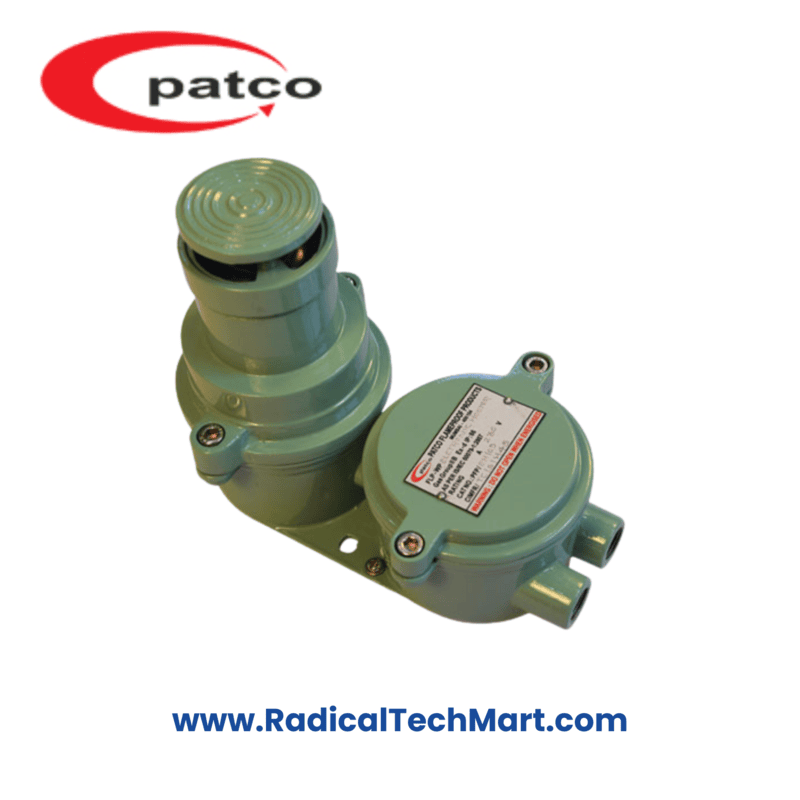
Patco FLP/WP Hooter
The Patco FLP/WP Hooter is designed for hazardous environments, providing an 80db audio signal and optional LED flashing to alert personnel in Zone 1 & Zone 2 locations.
Product Summary:
The Patco FLP/WP Hooter offers a reliable and robust signaling solution for hazardous areas. It features an 80 dB pulsating audio output, powered by either 230V AC or 24V DC, and is built to withstand extreme industrial conditions with an IP65 ingress rating and flameproof construction.
Key Features:
Catalogue No: PFP/EH/09
Ex-Protection: AS PER IS / IEC-60079-1:2007
Zone Classification: Zone 1 & Zone 2
Gas Group: Gas Group I, IIA, IIB
Ingress Protection: IP-65 (IS/IEC 60529-2001)
Auxiliary Supply: 230V AC or 24V DC
Power Consumption: 450mA @ 24VDC & 80mA @ 230VAC
Audio Range: 80 dB pulsating sound
Flasher: LED (optional as per client requirements)
Material: Die Cast Aluminum Alloy LM6
Terminal: 2.5 sq. mm Elmax Terminal
Paint Finish: Epoxy Polyester Powder Coating
Earth Terminals: Internal (1), External (2)
Cable Entry: 2 Nos. for M20 (3/4” ET)
Hardware: Stainless Steel
Application:
Hazardous area signaling in Zone 1 & Zone 2
Industrial plants, oil & gas refineries
Chemical and petrochemical industries
Pharmaceutical plants and cleanroom environments
Process control and safety systems
Product Benefits:
Provides clear and audible alerts in hazardous environments
IP65-rated, ensuring durability and protection against dust and water
Suitable for use in extreme conditions, including high-risk areas
Optional LED flasher for visual signaling
Compatible with both 230V AC and 24V DC power supply
Video Link:
FAQs:
Q1. What is the maximum power consumption of the Patco FLP/WP Hooter?
The hooter consumes 450mA at 24VDC and 80mA at 230VAC, making it energy-efficient.
Q2. Can the hooter be used in outdoor environments?
Yes, with its IP65 ingress protection, it is suitable for both indoor and outdoor hazardous area applications.
Q3. Is the LED flasher an optional feature for the hooter?
Yes, the LED flasher can be included as per the client’s specific requirements for visual signaling.